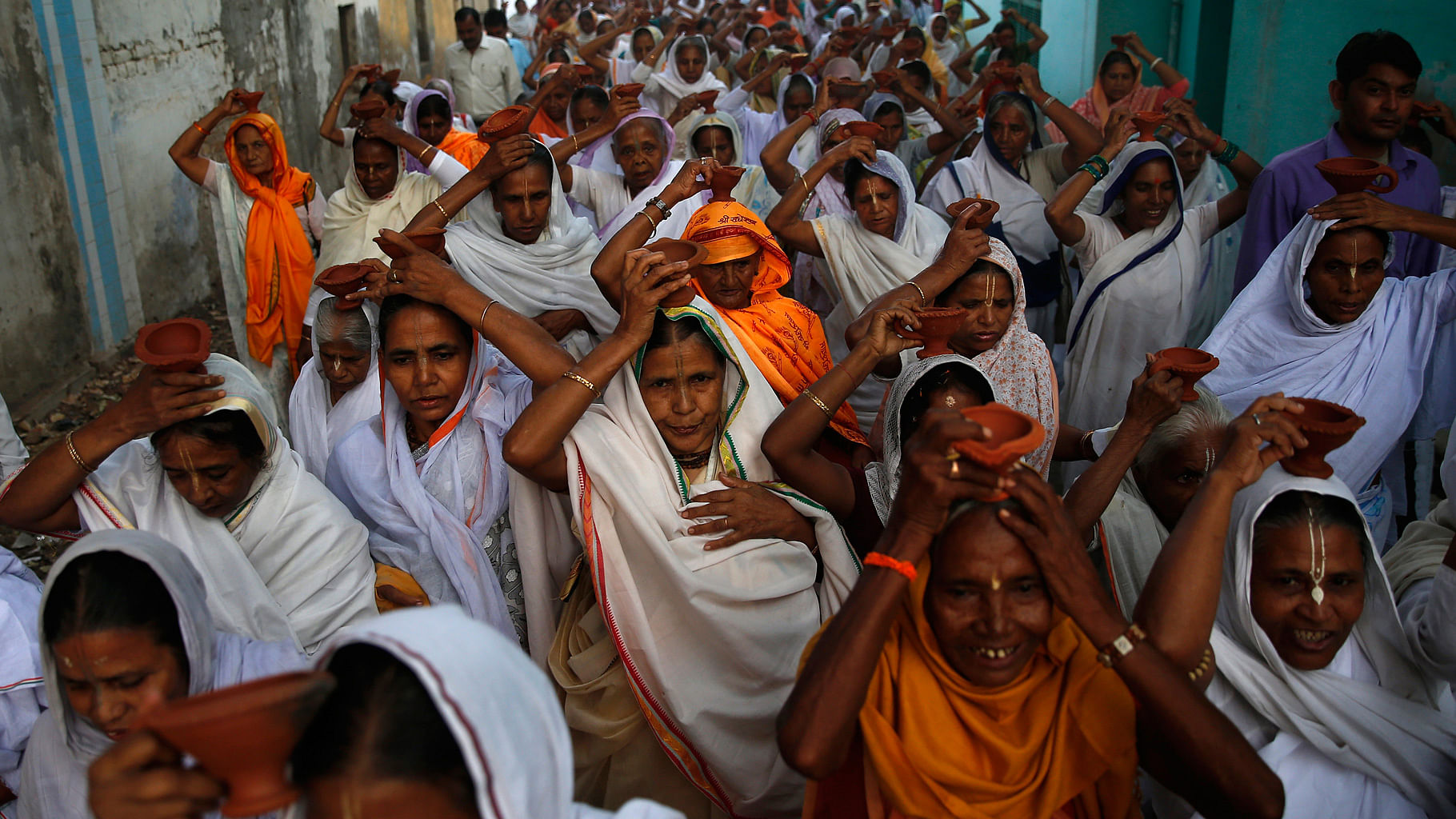Broken Bangles, Pale Sarees: Widows in India Lead Colourless Lives
Ahead of International Widows’ Day on Thursday, here are some facts about widows in India.

India has the greatest number of widows in the world, and many face abuse, violence, property theft and even enslavement, according to human rights campaigners.
The government is expected to offer better protection for the country’s more than 46 million widows in a new policy for women’s empowerment. Ahead of International Widows’ Day on Thursday, here are some facts about widows in India.
Rituals
The red sindoor on her forehead and in the parting of her hair, one of the signs of marriage, is wiped clean. In some cases, all her jewellery is removed and her glass bangles are smashed. Other traditions, that are thankfully becoming less common, include shaving the widow’s head and giving her a ritual bath, after which she may be forbidden from wearing colourful sarees. She will only be allowed to wear white or pale colours.
Diet
In some communities, widows are made to go on a bland diet devoid of onions, garlic and meat– foods which are believed to excite desire. Sweet food may also be forbidden.
Remarriage
Widow remarriage was traditionally frowned upon and is still rare in rural areas, even though there are no laws against it.
Superstition
Widows are generally considered inauspicious and aren’t allowed to participate in festivals, weddings or other celebratory social occasions.
Stigma
Widows are sometimes branded as witches, especially if their husbands died young or suddenly. Scores of single and widowed women are killed every year in states including Bihar, Jharkhand and Orissa, branded as witches. Some states have introduced a legislation against witch-hunting.
Property Inheritance
When a man dies, his wife rarely inherits his property, except in some states like West Bengal and Kerala, which have matriarchal set-ups. Many widows are even cast out of their homes and forced to live in an outhouse. In some cases, widows are sent to their parents’ house.
Sati
In the past, widows would jump into their husbands’ funeral pyres. Some did this voluntarily, but others were forced. Sati was banned by the British as early as 1829, but the practice continued in some states. A new law was passed in 1988 to criminalise the aiding or glorification of sati after the immolation of Roop Kanwar, an 18-year-old bride, in Rajasthan.
(This story has been published in an arrangement with Reuters.)
(At The Quint, we are answerable only to our audience. Play an active role in shaping our journalism by becoming a member. Because the truth is worth it.)